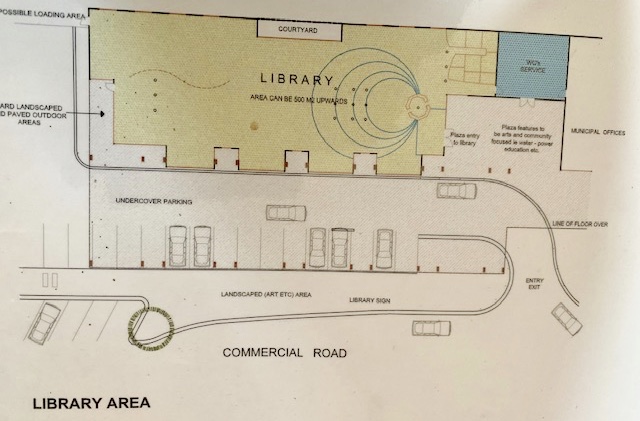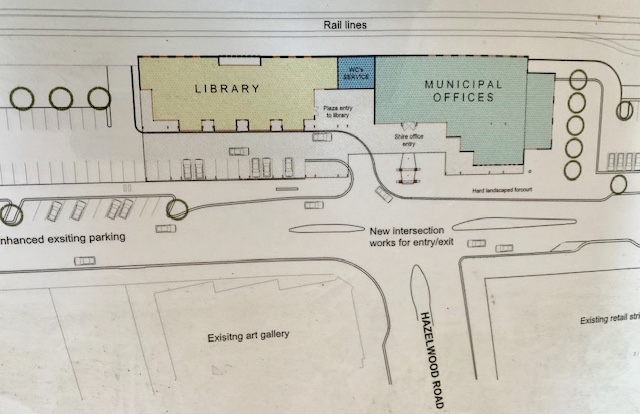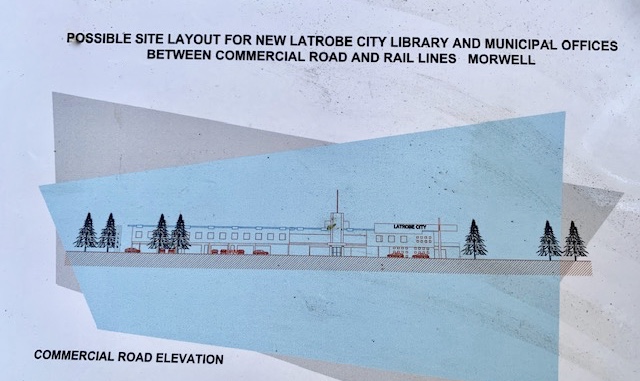Looking Back - Morwell Municipal Buildings
By Leo Billington
Sometimes hindsight is wonderful
Poet and painter, William Blake (1757 – 1827) once wrote, “Hindsight is a wonderful thing but foresight is better, especially when it comes to saving life, or some pain!”
During the early hours of Thursday January 10, 1935, a massive fire totally consumed Morwell’s Mechanics Institute, a rather formidable, wooden building located at the corner of Tarwin and George Streets.
As often was reported, residents of Morwell had their slumbers interrupted – people yelling, a tired old fire bell vigorously ringing (located opposite today’s Morwell Post Office), “tongues of red flame” and dense smoke. Basically, the locals were completely stunned.
The Morwell Mechanics Institute was a valued asset. It was used for public functions, Council meetings, formal occasions and also housed a public library containing approximately 2,000 books. Moreover, this was where films were shown – otherwise called “talkie machines.” The Clerk of Courts was housed here alongside a Masonic Lodge room and a basic welfare centre. The only other hall in Morwell, albeit a lot smaller was the Morwell Fire Brigade shed opposite today’s Post Office.
Morwell’s social hub was razed to the ground. A community was bewildered, wondering how it was to function effectively. Community cohesiveness was shattered. At least that’s how Morwell’s community and business leaders saw it.
Even Morwell’s billiard room with its magnificent, full sized table was partially burnt.
During November 1934, it was announced new books had been added for all library subscribers to enjoy. Titles were listed, including ‘Black Heart’ author S Horler, ‘Hermit of Far End’ by M Pedler, ‘Runaway Horse’ by Gary Marshall, ‘Sunset Range’ by Lawrence Keaton and many others.
Two weeks later, the Morwell Advertiser reported that “the needs of library subscribers must be catered for until such time as a library is opened in a new building.”
A temporary library was located in the old billiard room, still standing and quite convenient. Opening hours were Tuesday, Thursday and Friday afternoons; also, each evening except on Mondays. Mr Smithers took charge as supervisor.
One month later, after the fire, Mr E Pearson (Chairman of the Mechanics Institute Committee), at the annual meeting of library subscribers, suggested “alternate schemes to replace the lost hall and library – one, to combine with the Council Chambers and one to re-build on the present site (corner of Tarwin and George Streets).”
Later in February 1935, it was mooted that a new library be combined with the Shire Council in a new Town Hall building suggested for the corner of Hazelwood Road and Commercial Roads.

It is uncertain whether this idea grabbed the imagination of residents – rate payers as they were known back then. Whatever, public debate started, mainly through the Morwell Advertiser, but also on the streets. Factions were formed, and, roughly became united although passioned arguments fizzled out, only to be ignited again. Much depended on which Councillors said anything.
Prominent Morwell Shire ratepayer, Alf Ronald, for instance called for a chief public building, to set a high standard which, he believed, would have “a considerable influence on the prestige of a community.”
Alf did seem to waver between the two options, maintaining that a public poll should be conducted. Occasionally, in letters to the editor, Mr W S Mackenzie presented another view – mainly that “here are Councillors, elected to look after the business of rate payers, shutting their eyes to the splendid opportunity of establishing an administrative centre comprising Post Office, Council Chambers, Court House, Public Library and Town Hall” (Morwell Advertiser, March 7, 1935).
Throughout April and into May 1935, debate raged. (Readers may recall recent debates over siting a new Latrobe Region Entertainment Centre.)
Around this time, letters to the editor flourished; even one local resident writing in June, “ rise up Oh Morwell Mussolini, inspire your townspeople with civic pride and selfless endeavour to build a centre, worthy of Gippsland; the garden of Victoria.”

At their meeting on Wednesday June 19, a petition signed by 325 residents eventually shifted councillors to a sensible outcome – “that a suitable Town Hall be erected on O’Rourke’s corner (corner of Hazelwood and Commercial Roads) and that Council take the necessary steps for the floating of a loan.”
Council’s decision also included an invitation to the Mechanics Institute to co-operate “with a view to pooling resources and becoming a portion of a committee of management to the proposed new Town Hall.”
At least five months after Morwell’s library was destroyed, the way was clear to “ build a centre, worthy of Gippsland.” Procrastination seemed to disappear, at least for this time.
Here was an opportunity to create a civic centre as suggested by Mr W S Mackenzie several months earlier.
But alas, this vision slipped well away over the ensuing years; and the accompanying plans recently surfaced during a Covid lockdown inspired clean-up of stuff from a local garage.

The concept of combining a new library with Council’s central administrative centre was presented to Latrobe City Council when plans for a new Morwell based administrative centre were being determined. The Morwell Commercial Road offices opened in 2005.
It will be concluded that an opportunity was disregarded – lack of a vision perhaps; even procrastination. Possibly too late now? Perhaps not, if a visionary surfaced from somewhere.
As William Blake wrote, in part, “Hindsight is a wonderful thing but foresight is better.”


